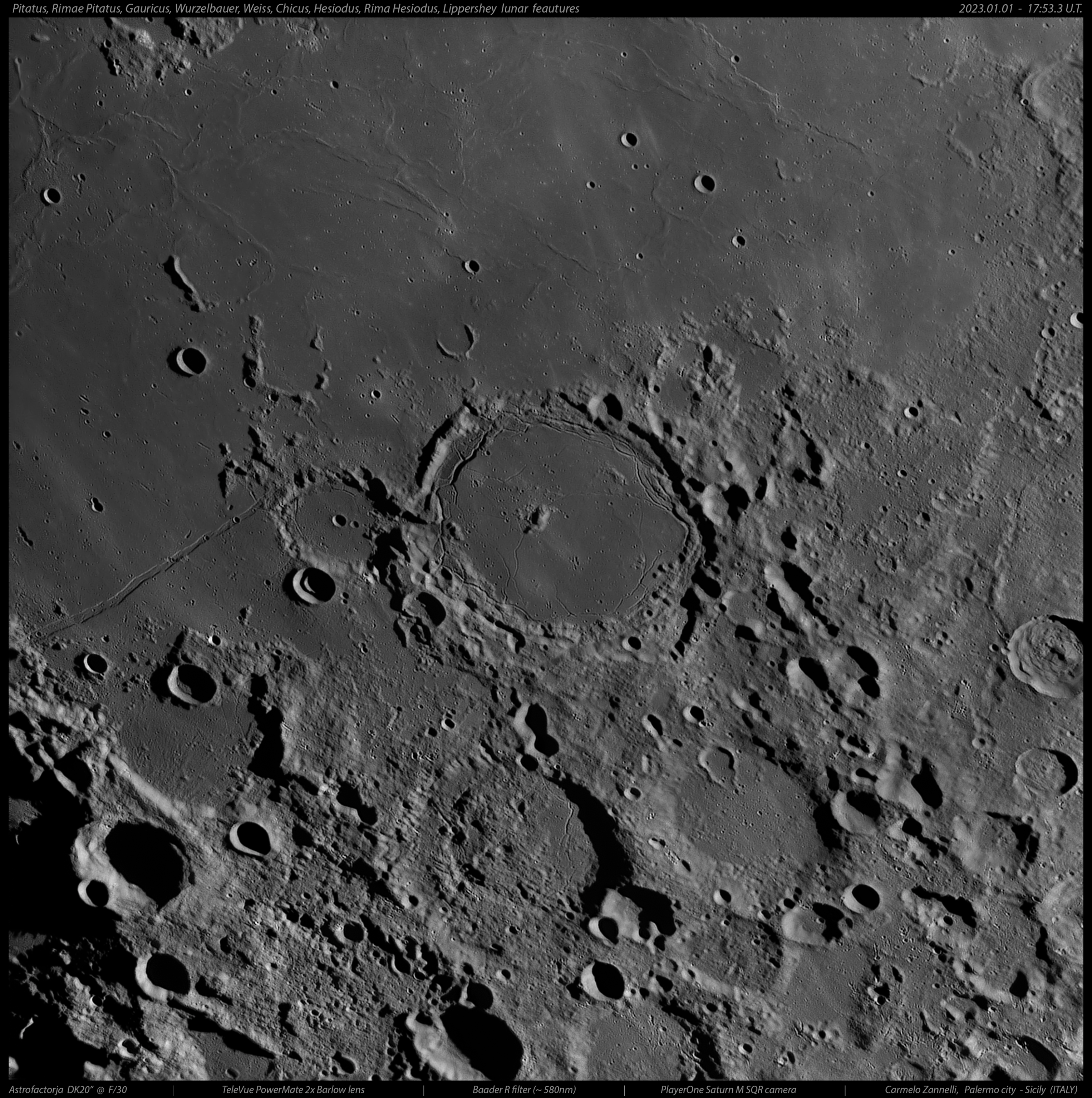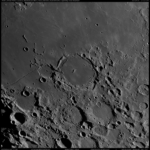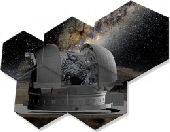Italiano:
Il cratere “Pitatus” è un grande cratere lunare da impatto di 100,63 km. di diametro, situato all’estremità meridionale del Mare Nubium. Esso prende il nome dall’astronomo italiano Pietro Pitati.
Adiacente al bordo nord-ovest c’è il cratere Hesiodus, col quale è unito da una stretta fenditura. A sud si trovano I crateri Wurzelbauer e Gauricus.
Il complesso fondo del cratere Pitatus è fortemente usurato ed è stato invaso da varie colate laviche, il che significa che è stato inondato dall’interno dall’intrusione di magma attraverso fessure e aperture come anche i crateri Gassendi e Posidonio che hanno caratteristiche simili.
Il bordo è più basso a nord, dove la lava si unisce quasi al “Mare Nubium”, mentre vicino al centro c’è un picco centrale basso (altezza circa 0,5 km.) che è sfalsato in direzione nord-ovest.
Il fondo del cratere, allagato dalla lava, contiene basse colline a est e un sistema di sottili fessure chiamate “Rimae Pitatus”. I più grandi e spettacolari di questi solchi, seguono i bordi delle pareti interne, soprattutto nelle metà settentrionale e orientale.
Grazie per l’attenzione e…. ad maiora semper !
Dettagli Tecnici:
Telescopio Astrofaktorja DK20″ @ ~ F/27 – Player One Saturn M camera – Televue Powermate Barlow 2x – Baader R filter – Seeing ~ 7/10 (max.) in R band – sito: Palermo @ my personal Observatory.
***************************************************************************************************************
English:
“Pitatus” crater is a large lunar impact crater of 100.63 km. in diameter, located at the southern end of the Mare Nubium. It takes its name from the Italian astronomer Pietro Pitati.
Adjacent to the northwest rim is the crater Hesiodus, with which it is joined by a narrow fissure. To the south are the Wurzelbauer and Gauricus craters.
The complex floor of the Pitatus crater is heavily worn and has been invaded by various lava flows, meaning that it has been inundated from within by magma intrusion through fissures and openings as well as the Gassendi and Posidonius craters which have similar characteristics.
The rim is lower in the north, where the lava almost joins the “Mare Nubium”, while near the center there is a low central peak (height about 0.5 km.) which is offset in a northwesterly direction.
The crater floor, flooded by lava, contains low hills to the east and a system of thin fissures called “Rimae Pitatus”. The largest and most spectacular of these furrows follow the edges of the inner walls, especially in the northern and eastern halves.
Thanks for your attention and…. ad maiora semper!
Technical details:
Telescope Astrofaktorja DK20″ @ ~ F/27 – Player One Saturn M camera – Televue Powermate Barlow 2x – Baader R filter – Seeing ~ 7/10 (max.) in R band – site: Palermo @ my personal Observatory.


